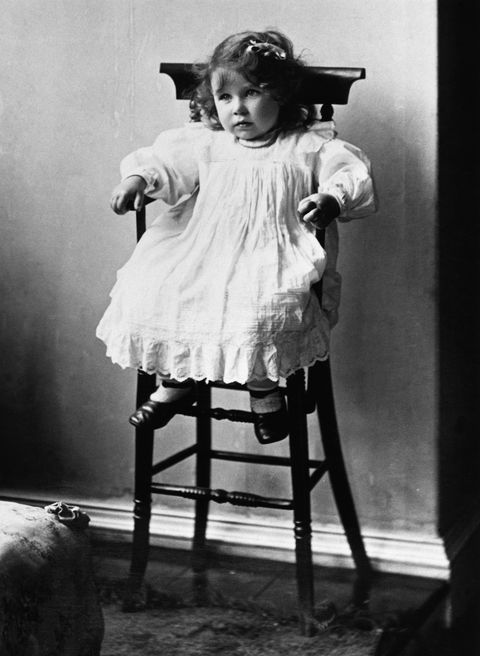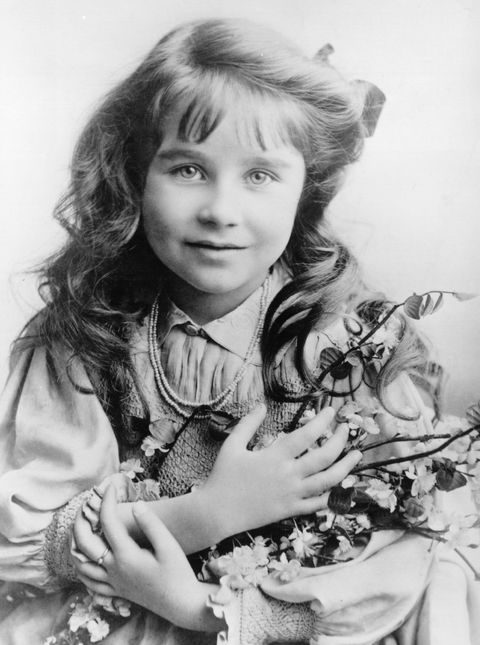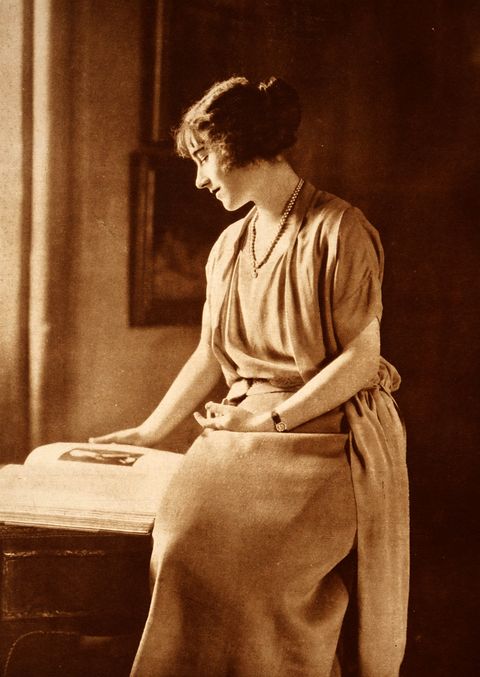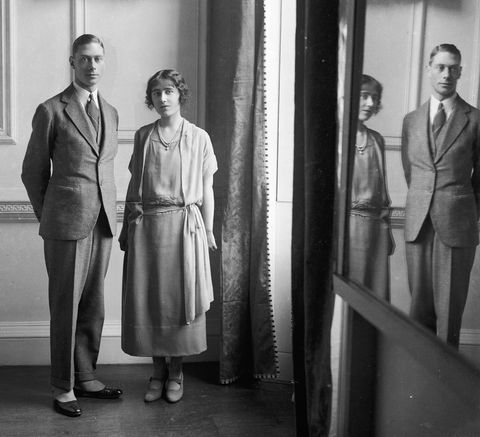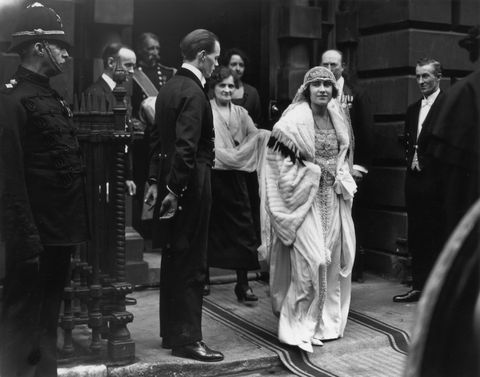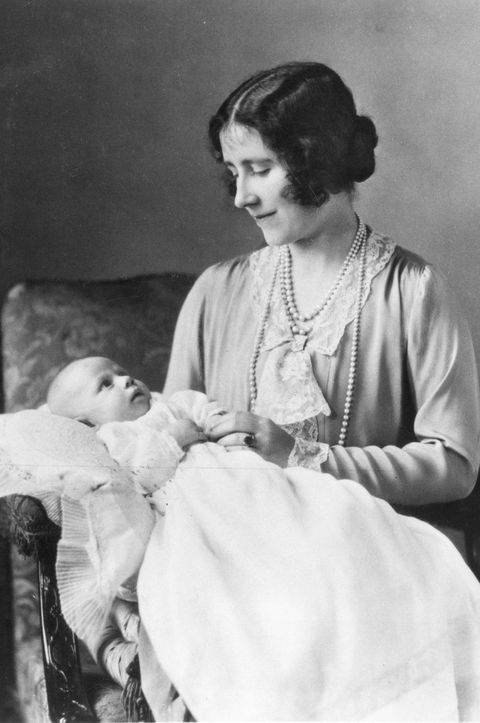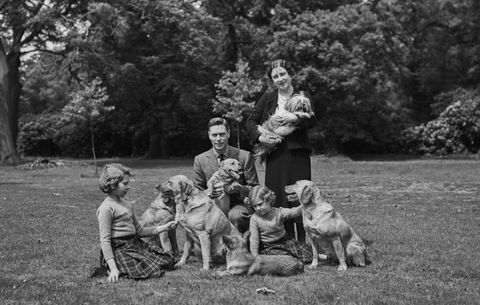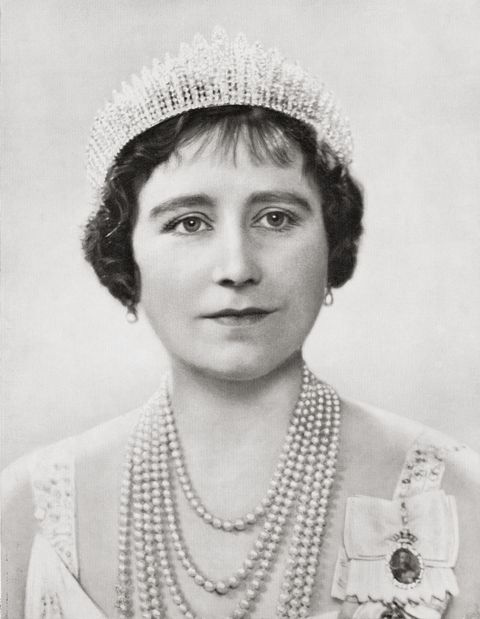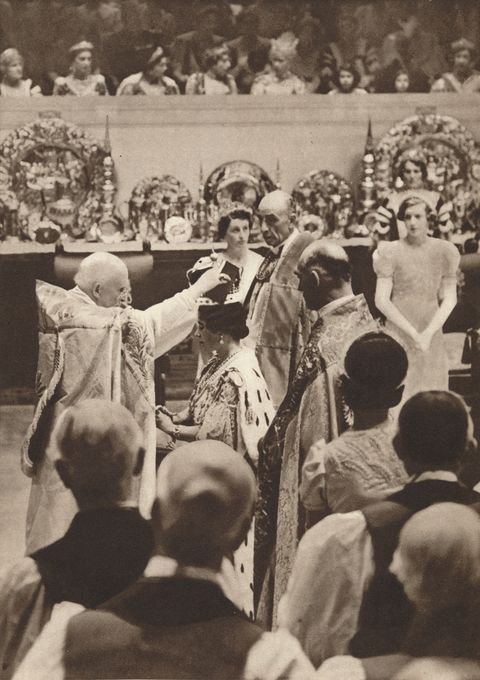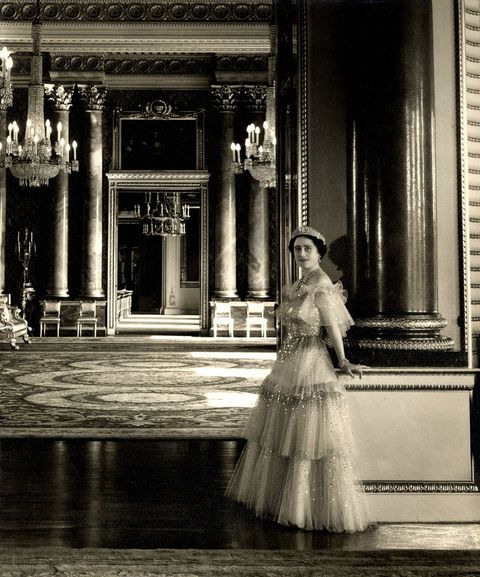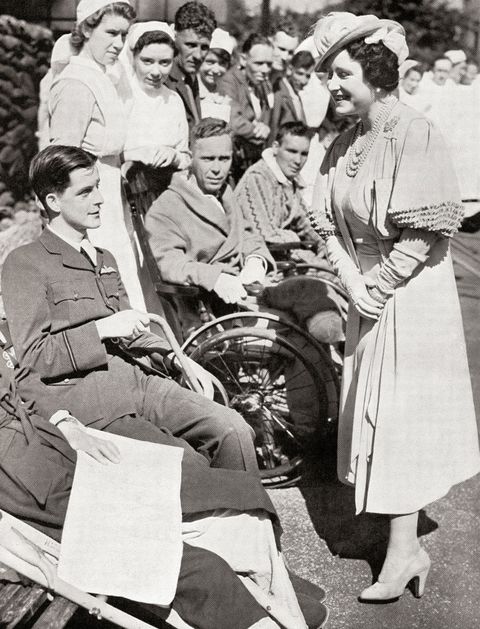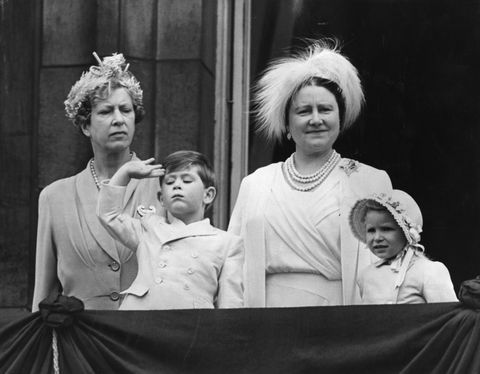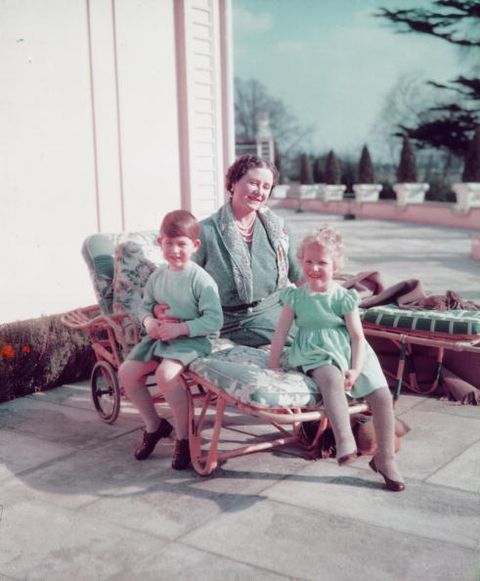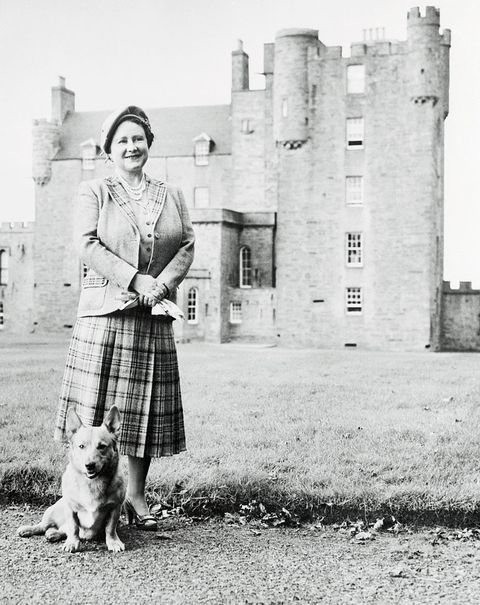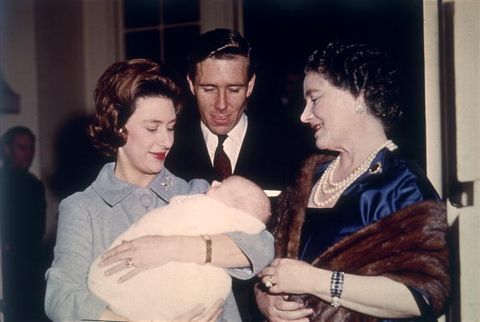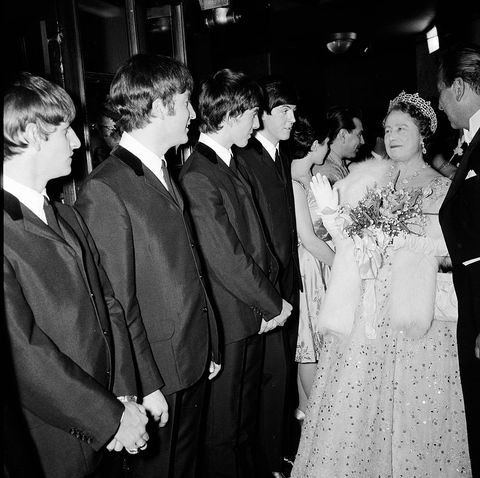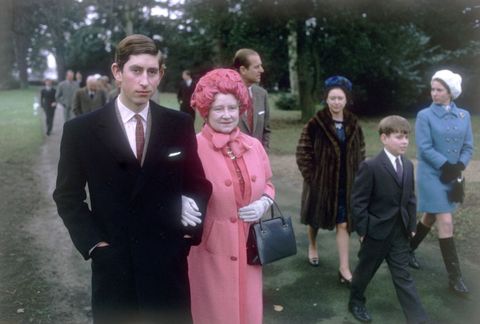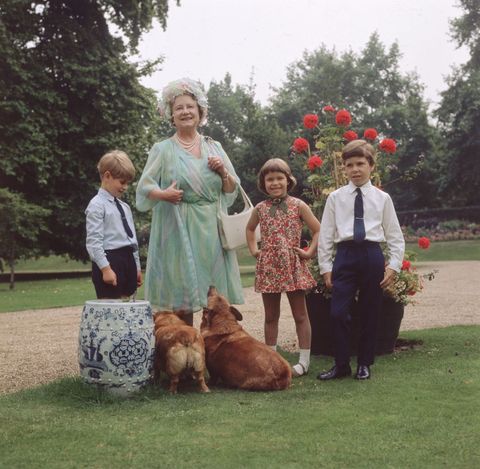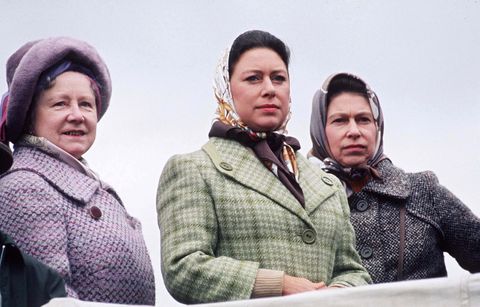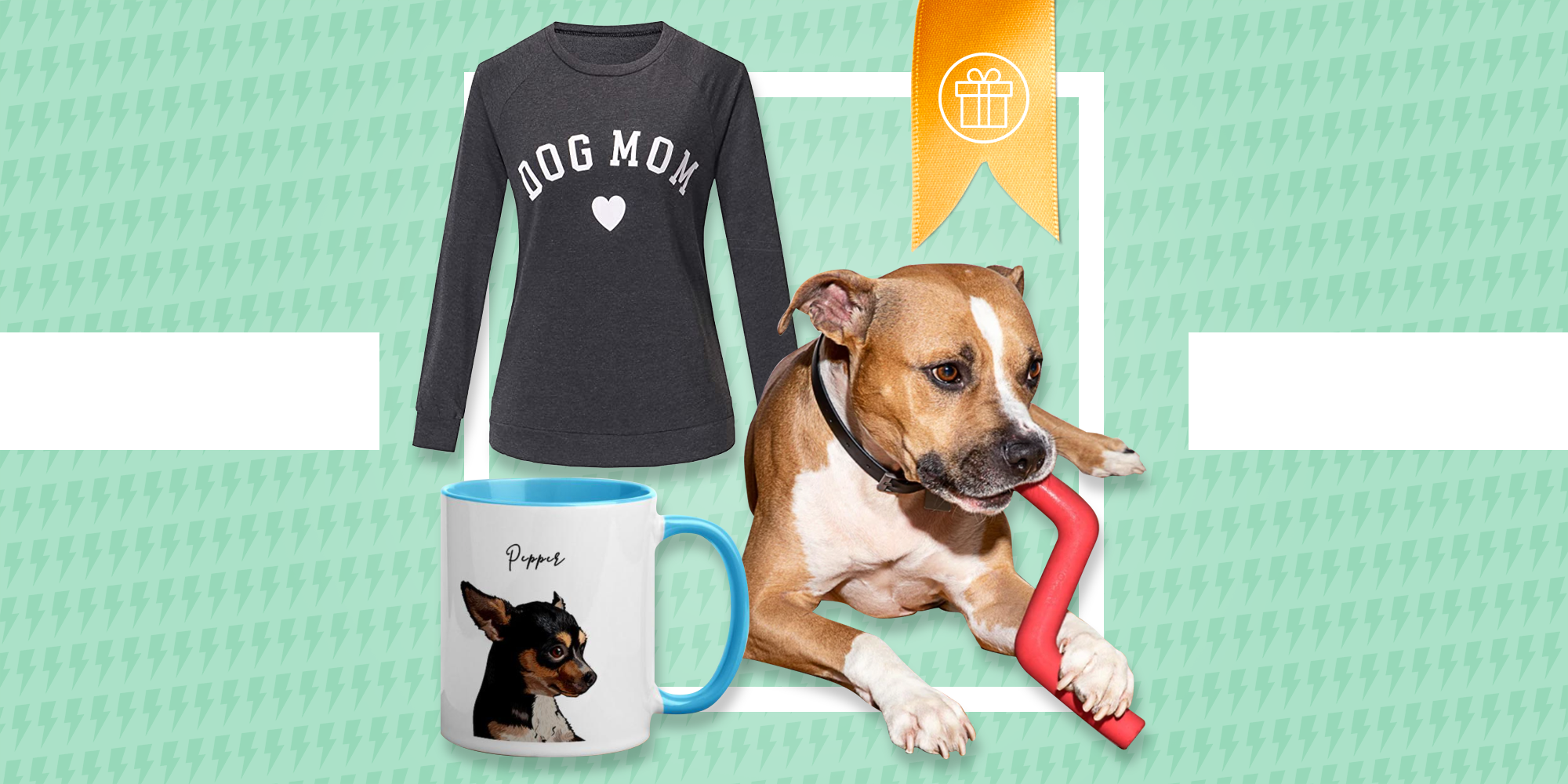While the Queen’s reign is documented in Netflix’s The Crown, there’s one thing we’ve found ourselves asking while bingeing the royal drama—what about the Queen Mother? After her husband King George VI’s sudden ascension to the throne, she served as the matriarch to the royal family and was instrumental in securing its legacy in the modern age. From going on royal tours into her late 80s to being the grandmother and great-grandmother to future kings, the late Queen Mother lived an exceptional life. See photos of her through the years, here.
Like many Queen Consorts, the Queen Mother was from an aristocratic family. Born the Honourable Elizabeth Angela Marguerite Bowes-Lyon on August 4, 1900, she was one of 10 children and the fourth daughter of her parents.
Elizabeth Bowes-Lyon spent her earliest years living in her parent’s country home, St Paul’s Walden Bury, in Hertfordshire. When she was 4 years old, her father inherited his family’s title, which was descended from the Scottish royal family. She became Lady Elizabeth Bowes-Lyon and moved into Glamis Castle in Angus, Scotland.
Throughout her childhood, Elizabeth and her siblings played with the royal children, like Princess Mary and Prince Albert. It was not uncommon when she was young for members of the royal family to stay at Glamis Castle.
Lady Elizabeth’s family home, Glamis Castle, was converted into a hospital during World War I—not unlike how the castle in Downton Abbey was depicted. As a young lady, she worked with patients who were staying on the estate.
Glamis Castle was returned to a private family residence after the war ended. Lady Elizabeth Bowles-Lyon was 18 at the time and lost her older brother, Fergus, in combat during the Battle of Loos in 1915.
Due to her close association with the royal family—it’s believed she was already being courted by Prince Albert at this time—Lady Elizabeth Bowes-Lyon was called on to serve as a bridesmaid in Princess Mary’s wedding in 1922. She was one of eight members of the bridal party.
Prince Albert, the King’s second eldest son, announced his engagement to Lady Elizabeth Bowes-Lyon in 1923. Here, the couple poses together for the announcement in January 1923.
Prince Albert proposed with a sapphire center stone ring that was flanked by diamonds. However, the Queen Mother eventually switched her engagement ring for one featuring a pearl and diamond cluster.
While planning their upcoming wedding, Lady Elizabeth Bowes-Lyon and Prince Albert visited the factory that would be baking their royal wedding cake—much to the factory workers’ delight.
Prince Albert became the Duke of York in 1920. Not long after receiving the title, he began his courtship with his future wife, who became the Duchess of York on their wedding day.
On her wedding day, photographers crowded around Elizabeth Bowes-Lyon’s family residence in London to catch a glimpse at the bride. She opted for a very 1920s-inspired bridal gown, featuring a drop waist and crystal embroidered bodice, custom made by Queen Mary’s dressmaker.
In 1926, the Duke and Duchess of York welcomed their first child, Princess Elizabeth. The Duchess gave birth in her family’s London residence on Bruton Street on April 21, 1926. Here, she leaves the home a few days post-partum with a baby nurse and her newborn in tow.
Four years later, the couple welcomed their second child, Princess Margaret Rose. The Princess was born at Glamis Castle on August 21, 1930.
The death of King George V meant Prince Edward took the throne and became King Edward VIII. The Queen Mother’s eldest daughter, Elizabeth, also became third in line. Outside of royal tours and appearances, the Duke and Duchess of York prepared for a quiet life out of the public eye with their children.
The royal family was thrown into chaos when King Edward VIII announced he was abdicating the throne on December 10, 1936. The decision threw the monarchy into a constitutional crisis, which resulted in the Duke of York ascending the throne.
The abdication meant that the Duchess of York become the UK’s next Queen Consort. She became the first British-born Queen Consort since the Tudor era. Here, she poses for an official portrait during the coronation festivities.
Elizabeth dropped her HRH title of the Duchess of York and was coronated as King George VI’s Queen Consort on May 12, 1937 at Westminster Abbey. During her coronation, her husband appointed her as a Lady of the Garter, as well as the first Lady of the Thistle.
Queen Elizabeth and her family moved into Buckingham Palace shortly after the abdication. While her husband King George VI was hesitant to take over the throne, the royal couple wasted no time jumping into their duties. In 1938, they embarked on their first royal tour as King and Queen, visiting France. A tour of the United States and Canada soon followed in 1939.
With the start of World War II, Princess Elizabeth and Princess Margaret were relocated to Windsor Castle for safety from the aerial bombings in London. The Queen, however, remained in Buckingham Palace with King George VI—even after a bomb nearly killed them inside the gates.
Queen Elizabeth visited the survivors of Dunkirk, a historic battle fought in 1940. The visit likely brought back memories from World War I, when her family home was turned into a hospital.
To celebrate the ally victory on V-E Day, Queen Elizabeth, King George VI, and their daughters joined Britain’s Prime Minister, Winston Churchill, on the Buckingham Palace balcony.
The death of King George VI not only widowed Queen Elizabeth, but also ushered in a new queen. Her daughter, Queen Elizabeth II, was coronated on June 2, 1953. The former Queen from then on was known as the Queen Mother and moved from Buckingham Palace into Clarence House shortly after her husband’s death.
The Queen Mother did not falter in her royal duties after her husband’s death. In 1954, she visited the Eisenhower administration on a trip to the United States. Here, she and First Lady Mamie Eisenhower shop at a local store.
When Queen Elizabeth II and Prince Philip were called away on royal duties, the Queen Mother stepped in to care for their children—along with a host of royal nannies, of course. Here, she sits with Princess Anne and Prince Charles on the grounds of the Royal Lodge at Windsor Castle.
While still grieving the loss of her husband, the Queen Mother purchased the Castle of Mey on the coast of Scotland. Here, she poses outside of the residence with her dog, Honey, after finishing her extensive renovations on the property in 1955.
The Queen Mother became a grandmother once again, this time to Princess Margaret and Lord Snowdon’s son, David Linley.
Ahead of their performance at the Royal Variety Show in 1963, The Beatles were introduced to the Queen Mother. She dazzled in a sequin embroidered ball gown, fur stole, and diamond tiara, which no doubt inspired John Lennon to tell the royal family to “just rattle your jewelry” during “Twist and Shout.”
Joining in the royal family’s Christmas festivities, the Queen Mother dresses in head-to-toe bubblegum pink and is escorted by her grandson, Prince Charles, for church services at the Sandringham Estate.
The Queen Mother was surrounded by her three youngest grandchildren in 1970 for her 70th birthday celebrations.
In 1973, the Queen Mother join her two daughter, Princess Margaret and Queen Elizabeth II, at the Badminton Horse Trials. The three Windsor women dressed strikingly similar, in wool peacoats and silk head scarves.
From: Town & Country US
Source: Read Full Article

